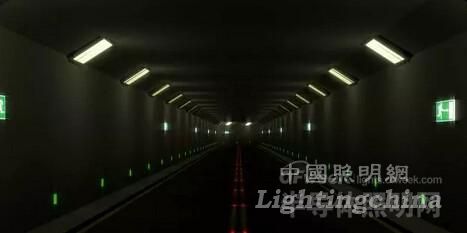Visual phenomena in the tunnel
During the day, when the driver drives the vehicle into and out of the tunnel, there will be a “black hole effect†and a “white hole effect.†When the car approaches the long tunnel opening, the brightness of the sky, the open road, and nearby buildings in the driver’s field of view, It is much brighter than the tunnel entrance. Under the effect of the induction phenomenon, although the hole actually has a considerable brightness, the driver still feels that the hole is very dark, like a "black hole", so that the situation near the hole can not be recognized, even the obstacle It is also difficult to find that this phenomenon is called the “black hole effect.†The opposite “white hole effect†is the transition from the darker environment in the tunnel to the brighter environment outside the tunnel. The strong glare felt and the tunnel cannot be seen immediately. The situation outside.
These two phenomena can be described very simply:
When we immediately entered a weak room from a bright environment, we could hardly see the situation in the room, and slowly waited for a short time, our eyes suddenly adapted to the darker environment of the room. Seeing the situation inside, this is the "black hole effect";
And when we walked from the dark room to the outside of the room, we all squinted, avoiding the light directly into the eye, and then slowly opening our eyes to see the surrounding environment. This is "white." Hole effect." Therefore, in order to make the human eye enter the tunnel and the tunnel to keep clear, so that the driver of the motor vehicle feels psychological and visual comfort, it requires a good transition and connection between the brightness in the tunnel and the natural light outside the tunnel. The visual characteristics of the eye design the tunnel brightness adjustment mode to be adapted to the human eye adaptation curve.
From the structure of the eye, there are two kinds of cells: pyramidal cells and rod cells. These two cells have different sensitivities to light. The rod cells are highly sensitive to light, and the pyramidal cells have low sensitivity to light. In a bright environment (brightness of 10 cd/m2), the cone cells are mainly involved in visual work. This visual state is called bright vision; in a dim environment (brightness is 10-2 to 10-6 cd/m2) The visual state is mainly involved in visual work by the rod cells. This visual state is called dark vision. When the brightness is 10-2 to 10 cd/m2, the rod cells and the pyramidal cells work simultaneously. Pyramidal cells and rod cells have different sensitivities to light. Pyramidal cells are most sensitive to light at 555 nm, and rod cells are most sensitive to light at 507 nm.
The eyes can see the objects not only in the sun, but also in the moonlight. This is mainly related to the exchange of pyramidal cells and rod cells, the size of the çž³å‘L, and the chemical changes on the retina. When the brightness in the visual environment changes greatly, the sensitivity of the vision to the change of the brightness in the visual environment is called adaptation. Adapt to both adaptive and dark adaptation. When people enter the bright environment from the dark, they will initially feel glare and can't see the surrounding scenery, but after a while they can restore normal vision. This adaptation is called adaptation. When people enter the dark from a bright environment, they will be invisible in the initial stage, and gradually adapt to the darkness to distinguish the contours of the surrounding objects. This process of reducing the visual threshold from light to dark is called dark adaptation. The adaptation time required for adaptation and dark adaptation is long and short depending on the specific situation. Generally speaking, the time required for adaptation is short, from a few seconds to tens of seconds; the time required for dark adaptation is long, and it usually takes 30 minutes to stabilize.

Lighting requirements in the tunnel
Lighting equipment is usually required for tunnel lengths greater than 100 m. Tunnel lighting is a functional lighting designed to ensure smooth traffic in the tunnel. The purpose of the lighting is to provide the driver with a safe and comfortable visual environment during the tunnel driving to ensure traffic operation and improve transportation efficiency. Since the tunnel is a semi-enclosed space, the tunnel is much more complicated in terms of driving visual characteristics than other lighting. It requires not only 24 hours of uninterrupted lighting, but also daytime lighting is more complicated than night lighting. Therefore, tunnel lighting has the following characteristics.
(1) Segmented lighting
Segmented lighting is the most prominent feature of tunnel lighting. This is because the light environment inside and outside the tunnel has changed a lot during the daytime, and the vision needs a certain adaptation time to see the road. Therefore, in order to allow the driver to have a good visual transition at the entrance and exit of the tunnel, the tunnel illumination is divided into several different lighting segments: the population segment, the transition segment, the intermediate segment and the exit segment, and each illumination segment The road surface brightness level requirements are different. The road surface brightness level of the population segment and the transition segment needs to be determined according to the brightness outside the tunnel hole.
The lighting and the reinforced lighting are composed of two parts. The former is considered by the middle section lighting, and the latter can be reinforced by the lamps with higher power. At the same time, there are corresponding lighting requirements for the lighting at the emergency parking zone and the connecting channel.